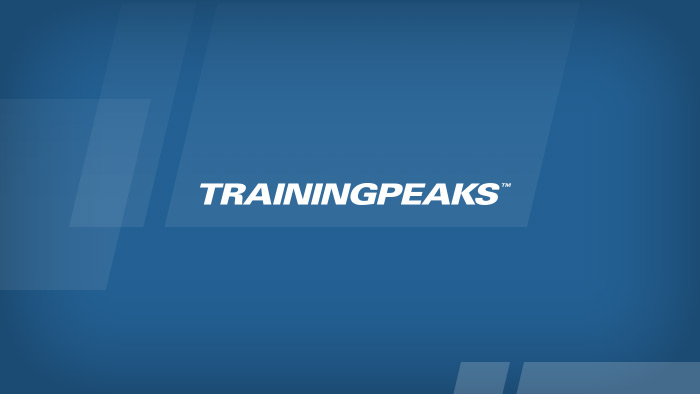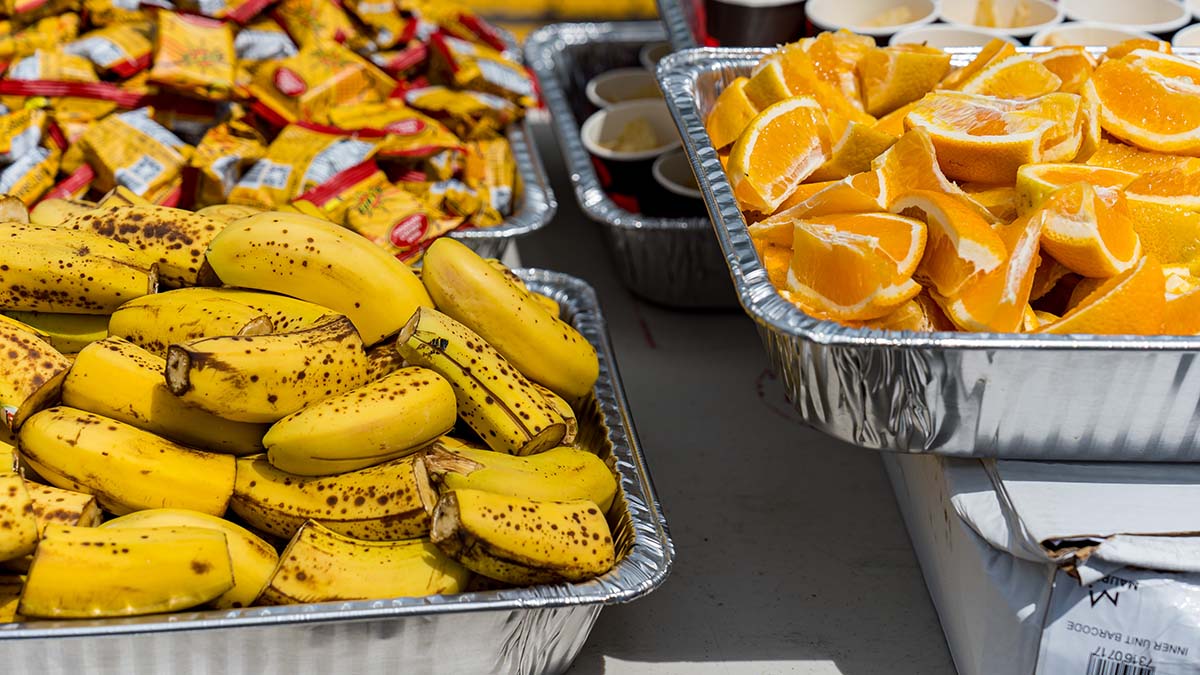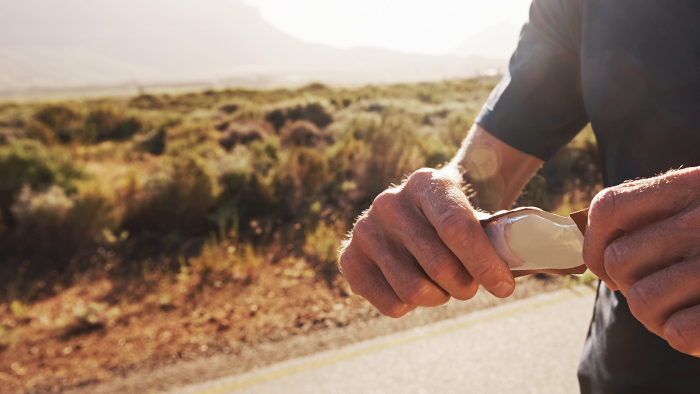When you’re born and bred in Italy, the question of whether you should go for a “low carb, high fat” diet sounds more like a reductio ad absurdum rather than a serious proposition.
We believe our mothers and grandmothers were given a degree in the Fundamentals of Sports Nutrition at birth. Encoded in their genes is the fact that carbohydrate is king, even if most of them probably don’t know the meaning of the word ‘carbohydrate’ or its role in sport performance.
So, how can we help our grannies (and athletes) define with scientific rigor what carbohydrates actually are? Are there bad and good carbs? Which ones should we eat when we train and race? And ultimately, should we say no, once and for all, to that spaghetti a la bolognése [bo·lo·gné·se]?
Types of Carbohydrates (CHO)
Carbohydrates are one of the three macronutrients, along with protein and fat. On a structural level, carbohydrates are molecules where atoms of carbon (C), hydrogen (H) and oxygen (O) are bonded together, always with a ratio of 2:1 of H to O atoms (like in water). There are several ways we can classify them.
First, “we can think about them in terms of how easy they are to digest,” says Rob Child, performance biochemist and Head of the Elite Sport Group. Child has worked as a nutritionist and nutritional consultant for several World Tour cycling teams including the formerly known as Katusha, Qhubeka and Cervélo. During those years he worked with cyclists like the Spaniard Carlos Sastre (2008 Tour de France winner), the Norwegian Thor Hushovd (Road World Champion in 2010) and the British Steve Cummings (winner of two stages at the Tour and the overall GC of the Tour of Britain in 2016).
“If we use that spectrum, [how easy are CHO to digest] we start with sugars, which are broken down already to some extent into monosaccharides like glucose, or disaccharides like sucrose. Sugars are found in fruits, honey and in some vegetables as well, such as carrots,” he says.
At the same time, though, the presence or absence of sugars also depends on how you cook your food. If you roast carrots they tend to get sweeter because the roasting process breaks more of their starches into sugars.
Starches themselves are further up on the chain. These can be broken into regular starches, which are essentially long chains of glucose units; and resistant starches, which have the same chemical composition but feature a 3D structure which is more complicated to digest. Regular starches behave more like carbohydrates, and include pasta, rice and bread. Resistant starches behave more like fiber (read below) and include the carbohydrate you find in beans, peas and lentils.
Finally, at the end of the digestion spectrum, we have fibers. These are made of glucose units as well, but their bonding is such that we can’t actually break them down. They are a structured form of CHO from plants and they are broken down by fermentation and bacteria in the large intestine. “Fibers are found in any green and leafy vegetables that stand up in the wind: broccoli, cabbage, lettuce, spinach. Anything that is not a root vegetable,” explains Child.
Most of the new, trendy super-food grains like quinoa or bulgur wheat can fall into several different categories. “A lot of these grains have a fibrous external coat and a starchy internal one. Quinoa in particular is a source of both protein and CHO, and that’s why it is highly regarded as a food source,” says Child.
The Role of Carbohydrate in Sport Performance
“Let’s put it simply; carbs are essential for sport performances,” says Child. In a bike race, for example, there are always riders who are trying to get into a break-away (maybe once, twice or even three times during the same stage); there are riders who fight for their position during a cross-wind section of a road (or before a sprint); and there are riders who go all-out on a climb. These are all efforts that require a high power output, which is fuelled by carbohydrate.
In a triathlon, think about the beginning of the swim; battling against the wind on the bike; overtaking another rider, tackling a hill or trying to push harder at the end of the run. Each of these situations requires the use of CHO.
“If we look at the rate of energy provision from fat in those situations, even in well-trained athletes, it’s normally the 40-50 percent of VO2max that can be fuelled by just burning fat, and often it’s a lot less than that,” says Child. “But most races are probably run on average of 60 percent of VO2max, and if it’s a mountain stage, the guys are riding at 65-75 percent of max average and often at maximum effort, so they would be knocking out more power and working anaerobically at 140 percent of the power output you’d see in a VO2max test.”
Any effort that is performed above 40 percent of VO2max is going to be fuelled by CHO. The only exceptions are 10-15 sec sprints, because these efforts use phosphocreatine as their energy source. But once again, to regenerate phosphocreatine, you need the magic C from carbohydrate before being able to sprint again.
Let’s use another example. What happens when you’re running out of your glycogen stores and you have no further supply of glucose? You hit the wall, or you bonk. Of course, you can still rely on fat as a source of fuel, but the intensity that you can sustain and the rate of oxidation of that fuel are much lower than when you have availability of CHO. If you want to maintain a high-intensity effort in a race (that is where you need to go from A to B in the fastest time) there is simply no escape—you have to consume CHO.
What are the best Carbohydrates for training and racing?
Well, it all depends on your goal. If you’re trying to lose weight or muscle mass, you will have better results (to some extent) if you go down the high-fiber, low GI index route (GI = glycemic index, which rates how quickly a food affects blood glucose). Carbs like oats, quinoa, and whole-grain breads are high in fiber. They also have an appetite-repressive effect, low GI and they would induce a lower insulin response (slower activation of insulin following carb ingestion).
All the other sources of CHO (white rice, white bread, white pasta) would have, on the other hand, a high GI index and higher insulin response. They would not serve you as well as the high fiber, low GI ones in the weight-loss scenario. But, there is always a but.
“It depends on how hard you train as well. As a general rule, in training, I would go more towards a diet with more fiber CHO than starchy ones,” suggests Child. Yet, for racing, the scenario would be quite the opposite, and you’d have better results if you opt towards the starchy CHO strategy rather than the fiber one. Just don’t forget to train your gut as well as your muscles!
“A lot of athletes are so restrictive in training on how much they eat. Often they deliberately under-eat, and then they cannot cope with the requirements of CHO intake during a race,” says Child. “You need to practice your strategy for the race in training as well. Not every day, but at least every ten days you’d have one day where you ride full gas and eat as you would do in a race.”
How much Carbohydrate should you consume?
The guidelines of the American College of Sport Medicine (ACSM) suggest taking in from 1 to 4 grams of CHO per kg of body weight from 1 to 4 hours prior to competition; then 30-60 grams of CHO per hour during competition and 1.0-1.2 grams per kg after competition.
“These are suggestions, but not law, and there is more than just the physiology to consider,” says Child. “If we look at Grand Tour riders we talk about 6-10 g/kg per hour, but again, it also depends on the individuals, their goals, the environment, and their energy expenditure. And that can change a lot.”
There are riders, for example, who can ride for 70% of the race mostly aerobically, and only because they can follow other wheels very efficiently. These riders can therefore consume less CHO and still have more energy available at the end of the race. On the other hand, other riders would do a huge amount of work just because they don’t have the same skillset, and during the same day and the same weather conditions, riders of the same weight and body composition would consume energy very differently.
“In terms of a pre-race meal, it depends on the athletes. If they need to ride a TT and they know they could win it, they would wake up in the morning pretty nervous and would not eat very much. But you can counter that by giving them more CHO the night before. Even though they didn’t have much during the day of the race, they would be already fuelled,” says Child.
“Some riders, on the other hand, are happy eating 200 grams of pasta a couple of hours before the event, but that also depends on how long their warm-up is. Even for relatively short efforts (like Team Time Trials), riders need a proper warm-up because they ride flat-out during the race. In that situation, they would recon the course first thing in the morning, then have a snack (pasta or rice) and then an hour of intense warm-up before the race effort. At that point, they have already ridden two hours before the TT, and therefore need to refuel those efforts before the big one.”
CHO are essential also after the effort. Because riders may have been drinking sugars the whole day, some would gravitate towards savory food as a refueling option—Child recommends liquid first and then solid (1.5 grams per kg/body weight per hour for the first three hours after the effort.)
What about the 60-70-90 grams per hour recommendation?
A lot of ‘commercial guidelines’ suggest that you need 60-70 grams of CHO per hour, but is that necessarily true?
“If you look at an-hour TT, the riders don’t eat at all. And generally you should be able to ride an hour, even an hour and a half without taking on any CHO at all without having drops in performance—on the provision that you had started the race with enough stores of glycogen in the muscles,” says Child. His strategy has always been to start the race well fuelled, rather than have to rely on fuel during the race. If the race starts and ends full-gas, there will be fewer possibilities to actually fuel adequately during the effort.
“A lot of companies also preach 90 grams per hour, but if you look at the research, there is huge variability in the potential for riders to actually absorb and oxidate that much CHO. From my experience, some struggled to consume a lot of carbs, and their maximum rate of supply was around 50 grams an hour,” says Child.
The way to get in any amount of carbs is also variable for every individual. Some prefer liquids, some gels, some a combination of both, while others—like Sastre—preferred to drink just water, with real food like bread rolls, jam tarts or ham and cheese sandwiches. The bread gave him glucose polymers and maltodextrin, while the cheese and ham, the salt. It was the same result as if he had taken electrolytes.
Are there bad Carbohydrates?
The very short answer to a very long and debated topic is, once again, it depends on what you’re trying to do. The same kind of CHO can be good in a specific situation and bad in others—as already highlighted in the examples above.
“Fibres make you feel more full, and if you’re riding hard at high intensity or you’re racing, one of the things that you don’t want is to feel full. You want to feel as if you can take onboard more CHO,” says Child.
The other issue with fibers is that they are correlated to GI upsets (gastrointestinal problems). Having a lot of fibers in a race, or just before a race, can cause the infamous GI issues we may have all experienced at least once.
“But if we turn this around, something that has a lot of fiber can be actually quite good if the training is focused on endurance and we are trying to train the fat metabolism,” explains Child.
One way to do this is by reducing the amount of CHO consumed during the training rides in order to push your body to burn more fat. This approach can be quite painful if you’re out riding for 3-4 hours, but that’s exactly when fibers can come into help and make you feel less hungry.
What about sugars?
In a race situation, sugars can be good because they are very easily absorbed and pre-digested on the way down to the intestine. The caveat is that not all the sugars consumed during exercise (or in a race) would be absorbed quickly.
If a solution of sugars is isotonic (same osmotic pressure or tonicity as body fluids) it empties from the stomach relatively quickly, but only if there is enough volume to activate gastric emptying into the small intestine where glucose transporters are located. And a delayed gastric emptying is detrimental when sugars are needed in the body quickly.
If, on the other hand, a solution is hypotonic (with a lower osmotic pressure than body fluids, or: very concentrated in sugars) then it would have a very slow gastric emptying.
So, ideally, you want to take in a solution that is isotonic. There are isotonic gels on the market, but they do not provide enough volume in the stomach and they need to be implemented with water in order to provide gastric emptying.
“One of the bad things about consuming a lot of sugars is that they can ferment in the palate and be broken down to produce acid by the bacteria in the mouth,” says Child. “So that can actually damage the teeth. We had a rider at Cervélo who was used to brushing his teeth after every race when he got on the bus.”
And pasta?
In this respect, starches aren’t as bad as sugars, because they do not break down as quickly in the mouth to produce acids. And once again, starchy CHO can be optimal for fuelling, but not as much when you’re training endurance or the fat-metabolism. When he worked with Steve Cummings, Child used to train him low-carb ahead of Grand Tours. Once he achieved his targeted body composition, he would eat the same carbs as the other guys during the race: rice, bread, pasta, and desserts. They also had a ‘variety trick’ they played around with to implement or reduce the amount of CHO consumed by the riders.
“If they had a rest day, then we wouldn’t provide many carbs, and we also reduced the diversity in terms of selection of CHO. If there is more variety, people will take a bit of everything and would end up eating more calories,” he says. “Vice versa, when they needed to eat more, we provided more stuff, we also baked a cake and some nice desserts. In this way, if they had a mountain stage the day after we were inadvertently carb-loading the riders a bit more by giving them more variety of food,” says Child.
So apparently my mother and grandmother were right. When it’s time to show the muscles, a dish of spaghetti bolognése will do.








